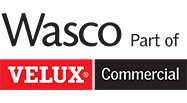“Tiny House” That’s Big On Energy Efficiency Arrives At Carnegie Science Center
Tiny House from Plastics Make it Possible® on display in Pittsburgh through September 2016
Apr 14, 2016, 08:00 ET
WASHINGTON, April 14, 2016 /PRNewswire/ — Plastics Make It Possible® and Zack Giffin, co-host of FYI Network’s “Tiny House Nation,” teamed up to build an energy efficient tiny house using innovative plastic building products that can improve a home’s energy efficiency. The 170-square-foot tiny house exhibit–”A Tiny House That’s Big on Energy Efficiency”–will debut at Carnegie Science Center in Pittsburgh on Saturday, April 16 and run through September 11. Zack Giffin built the house in Boulder, CO, and it was previously featured at the California Science Center in Los Angeles from November 2015 through February 2016.
The Plastics Make it Possible tiny house showcases innovative plastic building products that can improve energy efficiency in any size house–tiny or not-so-tiny.
Carnegie Science Center guests can explore the tiny house from 10 a.m. – 5 p.m. daily, weather permitting. The house will be on display on Carnegie Science Center’s back lawn, providing Pittsburgh a chance to explore this new trend in minimalist living.
“This tiny house captures how plastic-based building materials can make a big impact on improving any home’s energy efficiency, sustainability, and durability,” said Steve Russell, vice president of plastics at the American Chemistry Council, which sponsors thePlastics Make it Possible initiative. “Visitors will see firsthand that the durable and efficient plastic building products in this tiny house have stood the test of time and travel during the house’s journeys from Boulder to Los Angeles to Pittsburgh.”
Numerous building products featured throughout the home were donated, from the polyurethane foam insulation that provides a barrier against air and moisture to the tough, plastic solar shingles that protect the roof and generate energy. Other donated products include:
- Jeld-Wen Architectural Fiberglass door courtesy of Pittsburgh-based Covestro and Innovation Exhibits, Ohio.
- Polyurethane spray foam insulation courtesy of Dow Building Solutions, the Center for the Polyurethanes Industry and WhySprayFoam.org.
- Vinyl siding and trim courtesy of Associated Materials, the Vinyl Institute, the Vinyl Siding Institute, Inc. and National Housing Center.
- Polyiso foam insulation Thermasheath-3 and RSeal construction tape courtesy of Rmax Operating, LLC, Axiom Communications Group and Polyisocyanurate Insulation Manufacturers Association.
- Dow POWERHOUSE™ Solar Shingles courtesy of Dow Building Solutions and Dow Solar Field Operations.
- Vinyl windows courtesy of TILTCO, A DIVISION OF WINDOWORLD INDUSTRIES, INC. and American Architectural Manufacturers Association.
- WASCO polycarbonate skylight courtesy of Wasco Products, Inc. and Covestro, based in Pittsburgh.
- Polyethylene cross-linked pipe courtesy of Uponor and the Plastic Pipe and Fittings Association. Pipe installed is Acme-Cash.
- Luxury vinyl flooring courtesy of Metroflor and the Vinyl Institute.
Pittsburgh-based plastics makers are supporting the tiny house exhibit through their sponsorship of the Plastics Make it Possiblecampaign, including Covestro, LANXESS Corporation, and NOVA Chemicals Corporation.
Although tiny, the house is also big on style thanks to interior design firm JOHNSON NATHAN STROHE based in Denver, CO.
For more information on plastic building materials and sustainability, visit plasticsmakeitpossible.com/tiny-house. For more information on exhibit operating hours at Carnegie Science Center, visit http://www.carnegiesciencecenter.org. To view the Tiny House mini-documentary, visit: https://www.youtube.com/watch?v=LH1tfAOQZG4.
Plastics Make it Possible® highlights the many ways plastics inspire innovations that improve our lives, solve big problems and help us design a safer, more promising future. This program is sponsored by America’s Plastics MakersTM through the plastics industries of the American Chemistry Council.
Carnegie Science Center is dedicated to inspiring learning and curiosity by connecting science and technology with everyday life. By making science both relevant and fun, the Science Center’s goal is to increase science literacy in the region and motivate young people to seek careers in science and technology. One of the four Carnegie Museums of Pittsburgh, the Science Center is Pittsburgh’spremier science exploration destination, reaching more than 700,000 people annually through its hands-on exhibits, camps, classes, and off-site education programs.
www.americanchemistry.com/newsroom
The American Chemistry Council (ACC) represents the leading companies engaged in the business of chemistry. ACC members apply the science of chemistry to make innovative products and services that make people’s lives better, healthier and safer. ACC is committed to improved environmental, health and safety performance through Responsible Care®, common sense advocacy designed to address major public policy issues, and health and environmental research and product testing. The business of chemistry is an$801 billion enterprise and a key element of the nation’s economy. It is the nation’s largest exporter, accounting for fourteen percent of all U.S. exports. Chemistry companies are among the largest investors in research and development. Safety and security have always been primary concerns of ACC members, and they have intensified their efforts, working closely with government agencies to improve security and to defend against any threat to the nation’s critical infrastructure.
Contact: Jennifer Killinger (202) 249-6619
Email:
Photo – http://photos.prnewswire.com/prnh/20160411/353744
Logo – http://photos.prnewswire.com/prnh/20151123/290437LOGO
SOURCE Plastics Make it Possible
